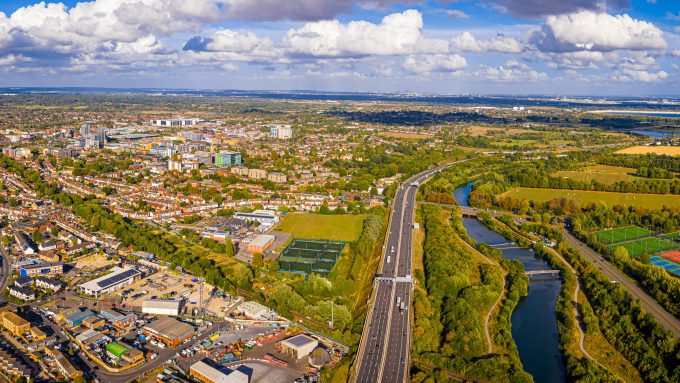
England local plans map: A technical blog

Our latest PlanTech prototype, the England local plans map, is an online illustrative representation of the current local plans displayed by planning authority. The map uses the housing numbers prototype created and managed by the Ministry of Housing, Communities and Local Government (MHCLG). This PlanTech tool is an experimental piece of work which collects housing numbers and dates of adoption of local plans and makes it possible to view or enter housing number data for planning authorities.
The England Local Plans map is a client-side online depiction created using HTML and CSS to display information on the map, and JavaScript code that allows us to do things with the information, such as show different plans per year.
This online map presents the current local plans by planning authority published on the Housing numbers prototype created and managed by the Ministry of Housing, Communities and Local Government (MHCLG). This tool is an experimental piece of work which collects housing numbers and dates of adoption of local plans and makes it possible to view or enter housing number data for planning authorities.
Our map is a client-side online depiction created using HTML and CSS to display information on the map, and JavaScript code that allows us to do things with the information, such as show different plans per year.
Joining and cleansing the data
In order to join and cleanse the data we wanted to use, we needed to extract the alphanumeric data from MHCLG as a CSV file. The first task was to join this with the vector polygon layer of the local planning authorities (LPA). We used QGIS – a free and open-source geographic information system application – to do this. The join operation allows us to use the fields of the CSV table from MHCLG’s housing numbers prototype and append it to the GIS vector polygons of the LPAs through an attribute or field common to both tables, in this case, the ONS codes.
Having joined the alphanumeric data with the vector data, it was verified that the MHCLG data didn’t include values for the LPAs of Castle Point District Council, Ashfield District Council and Medway Borough Council. These LPAs are represented on the map which shows their boundary and name, but at the time of launch, there was no access to data on the age or adoption of their plans. Joining the data also showed those LPAs with more than one plan, for example, Sheffield City Council has two plans and Thurrock Council has three. This overlap of information for the same geospatial area proved challenging in terms of representing the data accurately on a map. Following some data cleansing work, the result of the join was saved and exported a GeoJSON format so this new information could be saved as a layer.
From data to map display
The next stage of this prototype development process was to create a map that could represent the local plans, the year of their adoption and housing numbers per LPA. There were a few options to achieve this, for example, a thematic/choropleth paper static map. However, it was decided that a digital online map was more appropriate for users to interact with. It also helped overcome the challenge of how to represent LPAs with more than one plan as the digital map could more easily accommodate area overlays.
Mapbox was used to create the online map using a template background with the addition of the geospatial GeoJSON file (the joined data of LPA polygons and MHCLG’s housing prototype tool). The resultant map contains all LPAs represented on a choropleth map based on the year of adoption of the local plan. This data was then colour coded and a key added. The data range displayed runs from 2007 in light green (the year of adoption of the oldest plan), to 2019 in dark green (the year of adoption of the most recent plan). Where there is no date of adoption for a plan, or no data available at all, the LPA polygon remains transparent. The user can turn all the local plans on the map on or off by pressing the ‘Local Plans’ button, which would otherwise default to off.
Finally, a time slider was added to allow users to see data changes over time by filtering local plan data by year of adoption. The time slider also gives users the opportunity to see LPAs with more than one plan with an adopted date represented on the map. In these cases, the initial map overlaps multiple local plans. To see changes, users drag the range slider. This creates a visualisation of local plan adoption by year, with the initial value of the time slider year being 2019. We added the plan’s year of adoption as it’s often difficult to know the status of a local plan in the publication process as this information is either not always up-to-date, available or is difficult to find.
The map also provides other information about local plans. This is represented in a legend to the left of the map. To access this information, users need to hover over an LPA and the information window will display. This contains:
- the name of the plan, eg. “Camden Local Plan 2017”,
- the housing requirement (where relevant, provided as either; total, range, yearly average and yearly range), eg housing requirement total 16,800
- the plan period (start and end dates), eg. 2016-2031; and,
- the adoption date of the plan, eg. 2017-07-03.
The user can also use the search box, on the top-right corner of the map to search for places which make the location of local planning authorities easier.
The map serves as an excellent way to communicate local plan data geospatially, in particular, housing targets for each local authority. The map is also an efficient way to compare data across local plans, as well as hold accountability.





